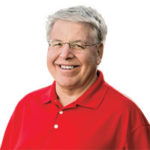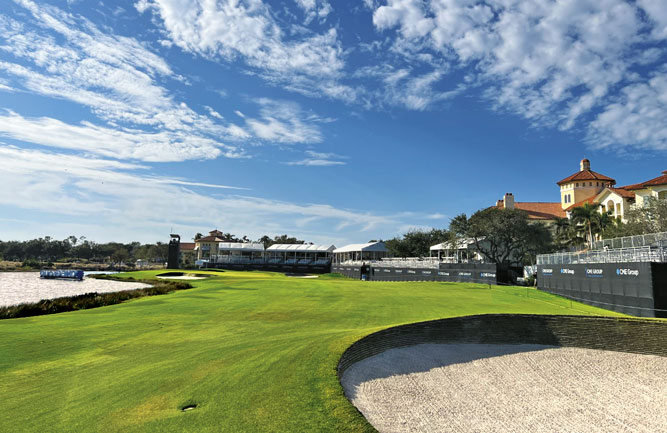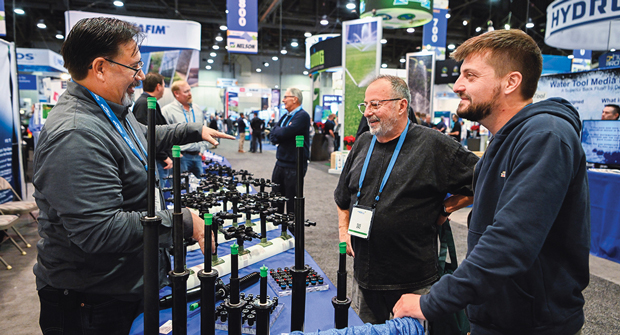Experts’ Insights: Annual bluegrass weevil

The annual bluegrass weevil (ABW) has been pestering golf course superintendents for more than 70 years. Experts say scouting is a critical component of ABW control. (Photo: Ben McGraw)
When Albrecht Koppenhöfer, Ph.D., professor and Extension specialist at Rutgers University’s department of entomology, first heard of the annual bluegrass weevil (ABW), he thought it had the makings of a beneficial insect.
ABWs prefer annual bluegrass, or Poa annua. Poa’s growth habits can prove difficult to control.
“That grass is so successful and so invasive that at some point, they have to choose what is easier: keeping the Poa out or controlling the pests that can damage it,” he says.
ABW has been a golf course pest for almost 70 years, with insecticide resistance becoming a problem over the last 20 years.
Scouting for ABWs is important for keeping ahead of the insect. Universities, such as Rutgers, have information available to help time the emergence of the pest. Koppenhöfer says superintendents should focus on the larvae if resistance is suspected.
ABWs prefer short-mown grass, and Kopppenhöfer says the ABW can survive mowing, so it is a good idea to dispose of clippings to ensure the weevils don’t return.
Above all, Koppenhöfer says don’t panic if you suspect ABW on your course because it’s next to impossible to eradicate the pest. One superintendent in his area has been successful for about 30 years with applying a single spray to problem areas in the spring to kill adults and a cleanup spray later in the year.
Koppenhöfer recommends that superintendents make peace with the pest and learn to live with it.
“Treat only where and when necessary, and the grass can usually recover if you give it enough water,” he says.

Paul Giordano (Photo: Bayer)
Bayer
Paul Giordano, Ph.D.
Green Solutions Team member
In areas where ABWs may be a “new” or emerging pest, damage on collars and edges of fairways in late spring/early summer is a good indication that a more dedicated scouting program may be warranted. Understanding the life cycle and population dynamics as well as using the right chemistry at the right time can help keep populations in check and limit subsequent generations into the summer. Keep an eye on the latest innovation and recommendations moving forward to ensure you’re employing the best tools available for success. Bayer is very excited about our new broad-spectrum insecticide active ingredient tetraniliprole. Although not yet registered in the U.S., this technology has shown exciting results on various turf insect pests, especially the ABW.

Rakim K. Turnipseed
FMC Professional Solutions
Rakim K. Turnipseed, Ph.D.
Product development manager, insecticides
One of the most notorious pests encountered by golf course superintendents is the annual bluegrass weevil (ABW). Effective management of the ABW involves proper identification. Scouting should be performed in annual bluegrass in mid-April to early May when adults begin emerging from overwintering sites at the perimeter. During this time, adults may be seen walking across turf stands. Minor damage first appears in mid-May when adults chew tiny notches in leaf blades. The most significant damage appears as yellow spots on short-mown turf caused by larval crown feeding from late May to early June, and again from mid- to late July to early August. At this time, turf can be easily pulled from soil when grass stems become hollow.

Ian Rodriguez (Photo: Quali-Pro)
Quali-Pro
Ian Rodriguez, Ph.D.
Technical services manager
Since damage doesn’t become apparent until the late stages of the first generation, superintendents should primarily focus on scouting to determine optimum control timings. Scouting can include placing pitfall traps and performing soap flushes or vacuuming to find adults and soaking plugs in saltwater to find larval stages. Preventing damage depends on stopping development before they reach the final stage and keeping them from a second generation. Monitoring development and targeting specific growth stages is the most effective approach to management. The ABW prefers annual bluegrass stands and is most commonly seen in turf adjacent to wooded areas where the adults overwinter. They are most common in the Northeast. The range is expanding and resistance is a known issue, so not putting all of your eggs in one basket or one mode of action is important.

Mike Agnew
Syngenta
Mike Agnew, Ph.D.
Technical services manager
It’s best to establish a routine of scouting for the annual bluegrass weevil (ABW). This may be as simple as looking for adults in mower baskets or doing soap flushes on collars and fairways. Scouting for larvae requires larvae extraction by sampling and salt flushes. When small yellow spots begin to appear on turf, a core sample on the spot may reveal young larvae feeding on the plant. Preventing damage requires not only scouting but a sound insecticide program. Adulticides should be kept at a minimum. Cyantraniliprole is also an excellent choice for targeted control of all ABW larval stages. It all goes back to knowing your golf course. Most golf courses that battle the ABW have “hot spots.” These are areas where damage can occur from one year to the next. Target these areas for scouting, and timing insecticides will become easier.











